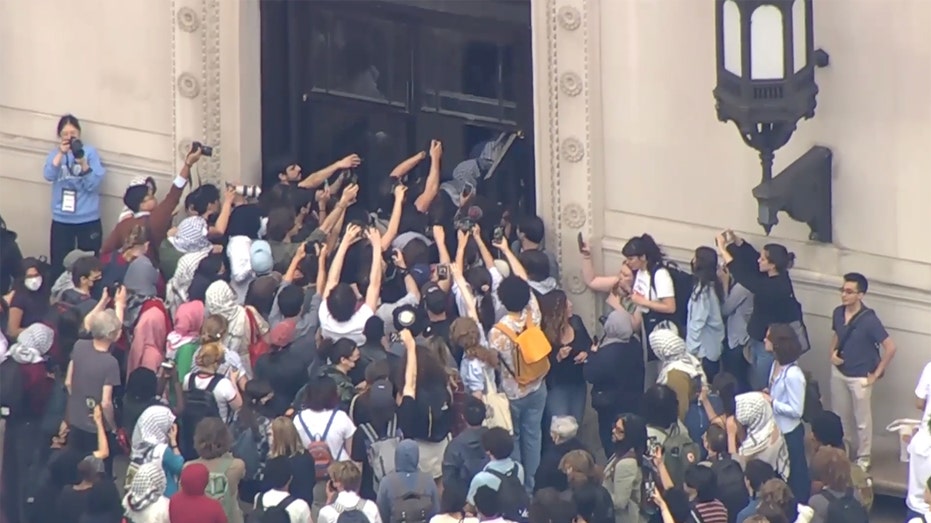GOP divided over Trump budget’s treatment of Pentagon
Republicans are divided over President Trump’s budget, which lays out his preferred vision for how the government should be funded for most of 2026. Hard-line conservatives have cheered the plan as a key step in the right direction and a roadmap for Republicans to follow when they begin crafting annual funding legislation in the coming...

Republicans are divided over President Trump’s budget, which lays out his preferred vision for how the government should be funded for most of 2026.
Hard-line conservatives have cheered the plan as a key step in the right direction and a roadmap for Republicans to follow when they begin crafting annual funding legislation in the coming weeks, but other Republicans have already raised concerns with how the Pentagon would fare under the plan.
“He basically has a status quo defense budget,” Sen. Kevin Cramer (R-N.D.) said on Tuesday, arguing the blueprint would not do enough to clearly beef up defense spending.
Trump officials say the president’s request would increase defense funding by 13 percent for fiscal 2026, bringing the total to more than $1 trillion.
But some GOP lawmakers have taken issue with the administration’s assumption that the increase would come from a major reconciliation bill currently being crafted in Congress.
“All of the growth in that comes from reconciliation,” Cramer said Tuesday afternoon, adding the reconciliation package Republicans are putting together “is a one-time expenditure.”
“I was disappointed in that. I’d rather see him go to a trillion with his budget and take the $150 billion from the budget reconciliation and do some things to jump-start some programs and to leapfrog in some areas and to catch up to our adversaries,” Cramer argued.
The budget plan flatlines base discretionary defense funding at roughly $893 billion for fiscal 2026. The funding for defense increases in the president’s budget only when funds from an evolving reconciliation plan are included.
Republicans are using budget reconciliation to pass what’s expected to be a $150 billion boost for defense programs, along with funding for Trump’s border and immigration enforcement plans, significant tax cuts and north of a trillion dollars in spending cuts.
But it is far from clear how that reconciliation project will end, and defense hawks in both chambers criticized the budget plan's defense spending.
For fiscal 2026, the White House said defense programs would see a roughly $119 billion boost when factoring in the “pending reconciliation resources.”
Senate Armed Services Committee Chair Roger Wicker (R-Miss.) came out against the move upon the plan’s release on Friday, saying the Office of Management and Budget (OMB) is “not requesting a trillion-dollar budget.”
“It is requesting a budget of $892.6 billion, which is a cut in real terms. This budget would decrease President Trump’s military options and his negotiating leverage,” he said.
OMB Director Russell Vought defended the plan to factor in the reconciliation boost in the calculation for total defense spending.
“This budget provides that level while ensuring that only Republican-votes are needed by using reconciliation to secure those increases without Democrats insisting on increasing wasteful government,” he said in a post on the social platform X.
The strategy has also garnered support from hard-line conservatives who have seen the reconciliation bill as a means to boost defense programs outside of the annual appropriations process, during negotiations for which, they note, Democrats could also insist on increases for nondefense dollars for parity.
Rep. Chip Roy (R-Texas) argued on X that the proposal from Trump marked a “wise paradigm shift — whereby we no longer let Democrats hold defense hostage for woke, weaponized bureaucrats — AND — we fund REAL defense modernization on OUR terms in reconciliation.”
Other Republicans have said the reconciliation bill should be “separate” from the annual appropriations process.
House Armed Services Chair Mike Rogers (R-Ala.) told The Hill on Monday that he instead wants “to see reconciliation on top of 5 percent over inflation” for defense programs.
At the same time, some Republicans have also shared concerns over the extent of some of the funding cuts proposed in the president’s request, which calls for nondefense funding to be slashed by more than 22 percent for fiscal 2026.
“There’s some things in there that there will be disagreements within the administration,” Rep. Mike Simpson (R-Idaho) said on Monday, while pointing to proposals to eliminate funding for programs like the Corporation for Public Broadcasting, which funds PBS and NPR, and the National Endowment for the Arts.
Trump proposed eliminating or zeroing out funding for dozens of federal programs the administration says are either duplicative, underperforming or are out of line with the administration’s priorities.
Some of the biggest cuts to agencies outlined in the proposals include spending reductions of roughly 44 percent for the Department of Housing and Urban Development, 31 percent for the Interior Department, 84 percent for the Department of State and international programs and 19 percent for the Treasury Department.
Lawmakers have also been pressed about a proposal for a roughly $18 billion reduction for the National Institutes of Health (NIH) compared with fiscal 2025 levels.
Asked about the proposed cut to NIH, House Appropriations Chair Tom Cole (R-Okla.) told reporters on Monday that “any cuts that size cause me concern,” but he added that Republicans “agree with the emphasis on defense and less domestic.”
“So, we’ll work that out,” he said.
But Republicans have reasserted that, despite the proposed blueprint from Trump, the power of the purse remains with Congress.
“We are in the position to do appropriations, and we'll take all of their recommendations into account. But this is the role for Congress,” Sen. Mike Rounds (R-S.D.) said.










































































